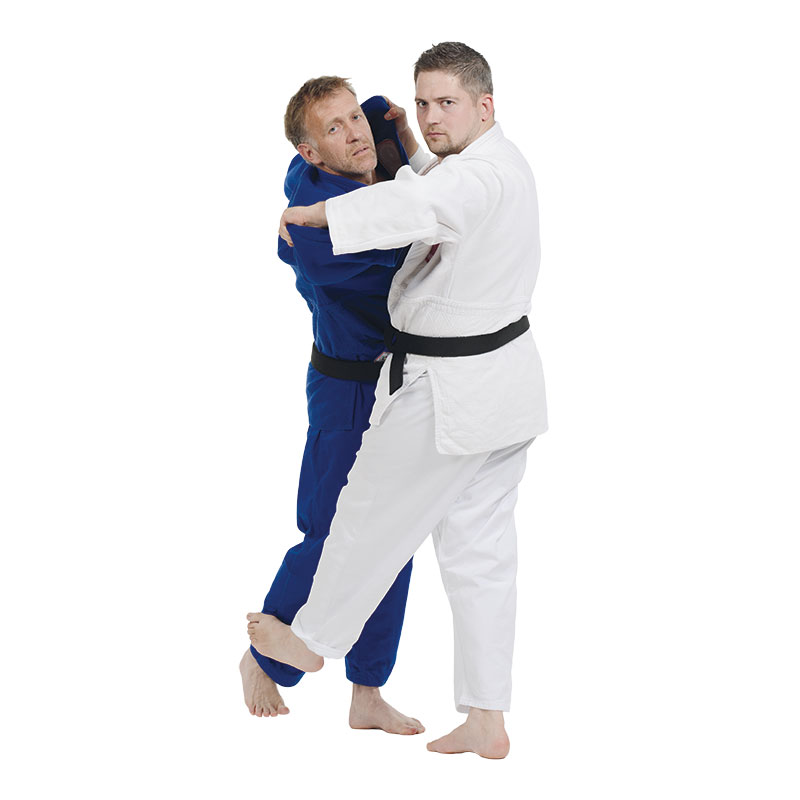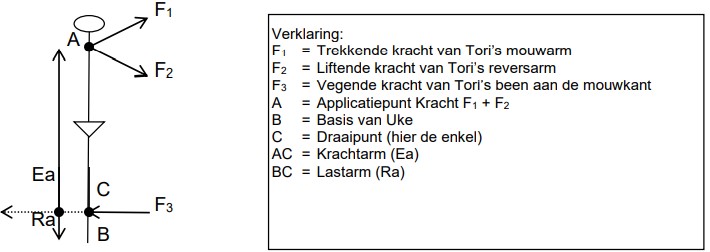Harai-tsurikomi-ashi 払釣込足
Sweeping Lift-Pull Foot Movement
Classification: Ashi-waza (leg technique)
Japanese meaning:
-
Harai = sweep
-
Tsuri = lift
-
Komi = pull inward
-
Ashi = foot/leg
Technical Description
Harai-tsurikomi-ashi is a dynamic sweeping foot technique, closely related to De-ashi-harai and Okuri-ashi-harai. Unlike those techniques, which usually sweep to the side or rear, Harai-tsurikomi-ashi is performed with a forward sweeping motion.
To execute the throw, tori:
-
Pulls uke forward and lifts to disrupt their balance towards the left front corner (uke’s left).
-
Then uses the inside of the right foot to sweep uke’s left ankle from the front.
The timing between the pull, the lift (tsurikomi), and the sweep (harai) is essential—only when uke’s weight is partially committed to the targeted leg does the sweep become effective.

Biomechanics of Harai-tsurikomi-ashi
This technique operates as a force couple (koppel) using the following components:
-
F1 + F2: Tori’s hands generate upward (tsuri) and inward pulling (komi) force, lifting and drawing uke’s upper body forward.
-
F3: Simultaneously, the sweeping leg removes uke’s support leg (usually the left ankle), eliminating the base of support (C).
The opposing directions of force above and below uke’s center of gravity create rotation, causing uke to fall.

Did You Know?
The phrase Mizu no kokoro (水の心) translates to “a mind like water.” In Japanese philosophy, water is often used as a metaphor for the ideal mindset in martial arts—flexible yet powerful, calm yet capable of carving through rock.
Like water, the judoka’s mind should remain clear and reflective, able to adapt instantly to the situation. This is one reason why mokusō (黙想)—a moment of silent meditation—is observed before and after judo practice: to still the waves of the mind and return to clarity, just like water at rest.